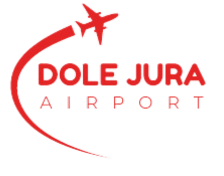What is Terminal building? “Understanding Terminal buildings”
“What is Terminal building?”
A terminal building is a structure at an airport, bus station, train station, or ferry terminal that serves as a central hub for passengers to arrive, depart, and transit. It typically houses various amenities and facilities to facilitate the movement and comfort of travelers, such as check-in counters, security checkpoints, boarding gates, baggage claim areas, waiting lounges, retail shops, restaurants, and transportation connections. The terminal building is designed to efficiently handle the flow of passengers and provide essential services for a smooth travel experience.
“Understanding Terminal buildings”
A terminal building is a structure at an airport where passengers go through various processes before boarding their flights or after arriving at their destination. It serves as a central hub for all airport operations related to passenger services.
The primary purpose of a terminal building is to facilitate the movement of passengers in an organized manner. It typically consists of several areas or sections, each with a specific function, such as check-in counters, security checkpoints, departure lounges, arrival halls, baggage claim areas, customs and immigration facilities, and various retail and dining outlets.
1. Check-in counters: This is the area where passengers present their travel documents and receive their boarding passes, have their luggage checked-in, and sometimes pay additional fees, if necessary.
2. Security checkpoints: After check-in, passengers move through security screening, which includes passing their carry-on bags and personal items through X-ray machines and walking through metal detectors or body scanners.
3. Departure lounges: These are comfortable waiting areas where passengers can relax before their flight. They often provide amenities such as comfortable seating, restrooms, charging stations for electronic devices, and sometimes, access to business facilities and VIP lounges.
4. Arrival halls: Upon arrival at their destination, passengers enter the arrival hall, where they collect their checked-in luggage from baggage claim carousels. Here, they may also find customs and immigration facilities, where they are required to undergo necessary entry procedures, such as passport control and customs inspection.
5. Retail and dining outlets: Terminal buildings often feature a variety of shops, boutiques, duty-free stores, restaurants, and cafes where passengers can shop or grab a meal while waiting for their flight or upon arrival.
Terminal buildings are designed to handle large numbers of passengers efficiently. They may have multiple levels or concourses, each serving specific airlines or destinations. They also incorporate various transportation facilities, such as taxi stands, bus stops, and sometimes, train or subway connections.
To ensure smooth operations and maximize passenger comfort, terminal buildings are equipped with signage, information boards, and staff members who assist passengers with any inquiries or problems they may encounter.
Overall, terminal buildings are essential components of an airport infrastructure, facilitating the movement of passengers and providing them with necessary services and amenities before and after their flights.
“An overview of Terminal buildings”
A terminal building, also referred to as an airport terminal or simply terminal, is a structure at an airport where passengers are processed before boarding their aircraft and after disembarking upon arrival. It serves as a central hub for various airport operations, including check-in, security screening, customs and immigration processes, baggage handling, and boarding gates.
The primary function of a terminal building is to facilitate the movement of passengers efficiently and provide them with necessary amenities and services. These buildings are designed to accommodate a large number of passengers, airlines, and flights simultaneously. They are typically organized into different areas, including arrivals and departures, domestic and international flights, as well as designated gates for specific airlines or flight destinations.
Here are some key features and areas commonly found in terminal buildings:
1. Check-in counters: These are where passengers present their identification documents, receive boarding passes, and check-in their luggage.
2. Security screening: Passengers usually pass through security checkpoints to ensure the safety of the flight. This process involves screening for prohibited items and conducting passenger body scans.
3. Departure lounges: These areas provide seating, restrooms, and various amenities for passengers waiting for their flights. Some lounges may offer additional services, such as food and beverage options, duty-free shopping, and business facilities.
4. Boarding gates: These designated areas are where passengers wait before their flights. Boarding gates often have seating, charging stations, and display screens showing flight information.
5. Baggage claim: After landing, passengers proceed to the baggage claim area to retrieve their checked-in luggage. This area typically consists of conveyors that transport bags from the aircraft to designated pickup points.
6. Customs and immigration: International passengers may go through customs and immigration processes upon arrival or departure. These areas are responsible for passport control, declaration of goods, and other security measures.
7. Retail and dining establishments: Many terminal buildings include a variety of shops, restaurants, cafes, and other retail outlets to cater to passengers’ needs and provide shopping and dining options.
Terminal buildings vary in size and design, depending on the airport’s capacity and passenger traffic. Larger airports often have multiple terminals, each with its specific functions and amenities. The design and layout of these buildings aim to provide a streamlined and comfortable travel experience for passengers while maintaining airport security and efficiency.
